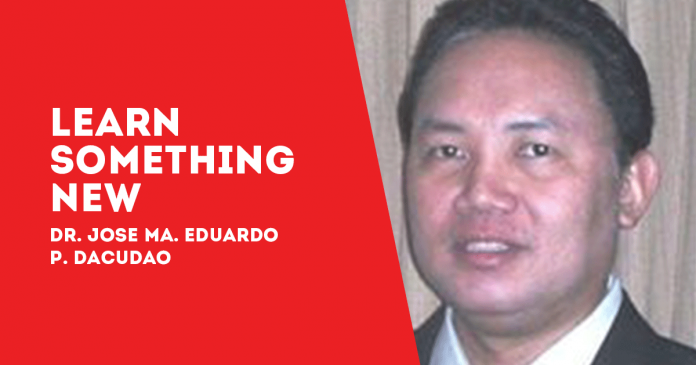
BY DR. JOSE PALU-AY DACUDAO
ART. XIV
SEC.6. The national language of the Philippines is Filipino. As it evolves, it shall be further developed and enriched on the basis of existing Philippine and other languages.
SEC.7. For purposes of communication and instruction, the official languages of the Philippines are Filipino and, until otherwise provided by law, English. The regional languages are the auxiliary official languages in the region and shall serve as auxiliary media of instruction therein.
HISTORICAL BACKGROUND
1935 Constitution
After the promulgation of the 1935 Constitution, the Institute of National Language was created by the National Assembly. It was heavily influenced by leading Tagalog nationalists including Claro M. Recto and President Manuel Luis Quezon himself. This Institute recommended to President Manuel Luis Quezon the choice of Tagalog as the basis of the ‘common national language’ mandated by the Constitution. Quezon then proclaimed Tagalog as the national language of the Philippines on 30 November 1937, supposedly based on the Institute’s recommendation, although it was known that the Tagalista Quezon himself had influenced the Institute’s recommendation.
Naturally educated non-Tagalog Filipinos who saw the implications of Quezon’s actions protested. Before World War II, Tagalog was never taught in Philippine schools in the national level. It was clear to the educated non-Tagalogs that allowing the teaching of Tagalog (even a Tagalog honey-coated as ‘Filipino’) would marginalize their peoples, turn them into second class citizens.
Then World War II came, and with it the anti-American Japanese. English, a socially neutral leveling tongue in use all over the Philippines, with the added bonus of being the international language of science, technology, commerce, and diplomacy, was banned, inasmuch as it was the language of the American enemy. In 1942, executive order 44 issued by collaborationist and Tagalista President Jose P. Laurel ordered the integration of Tagalog into the core subjects of the University of the Philippines. In short order, Tagalog became a permanent course in all Philippine schools, and a symbol of anti-Americanism. Note that it was the Japanese government that enforced Tagalog as its language of internal colonialism; there was no voting, referendum, or democratic processes involved. When the Japanese left, Tagalog remained behind as the language of internal colonialism by Metro Manila-based institutions, with no voting, referendum, or democratic processes involved.
1973 Constitution
What is the ‘Pilipino’ language? This constitutional provision does not refer to” one of the existing native languages” as in the 1935 constitution. Quezon had justified the selection of Tagalog on the exclusivity of the provision – “based on one the existing native languages”.
This is where the provisions of the 1935 and 1973 constitutions differ. Exclusivity to one language was no longer mandated in 1973. It would follow that the ‘Pilipino’ official language of the 1973 Constitution shall be based on and evolved from other Philippine languages as Tagalog cannot lay claim as the only sole language referred to, as was the case in the 1935 Constitution. (To be continued)/PN



